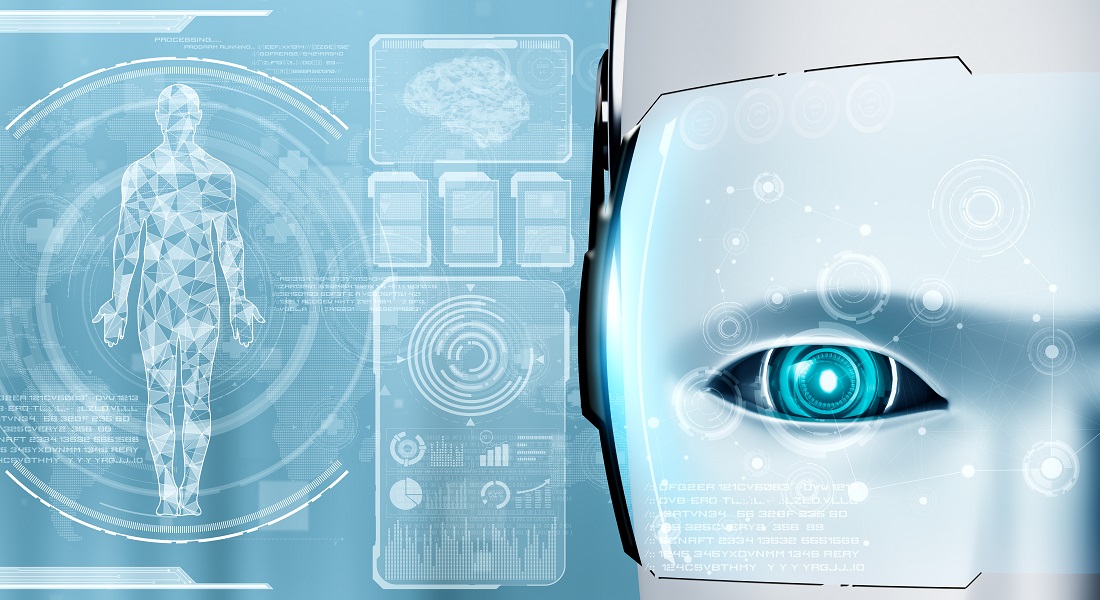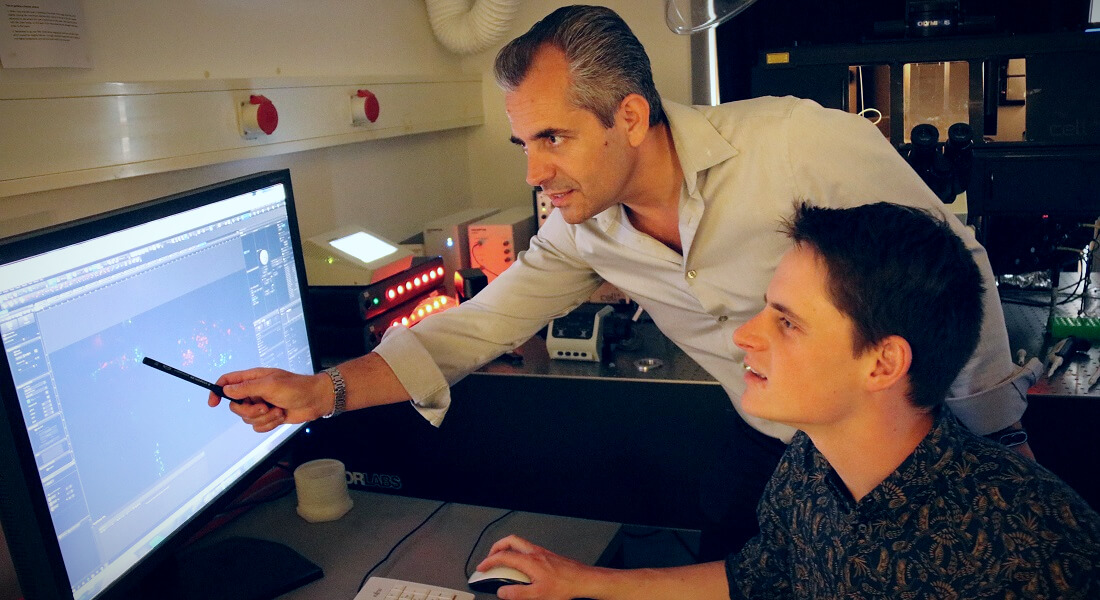Using artificial intelligence to fingerprint suspicious proteins
An artificial intelligence tool created by researchers at the University of Copenhagen can quickly and accurately identify suspicious or particularly 'talented' proteins in our bodies based upon their movements alone. This includes proteins that are involved in nanomedicines, cancer spawning proteins, proteins used in green detergent application – and probably virus proteins as well.

Police spot suspicious behaviour in various ways. Does a person move in an unusual manner? Do they opt for different routes than others? Frequently check their surroundings? Typically, a combination of factors weighs in, though it can be difficult to formalize which ones matter most from case to case.
The same applies as biochemists seek to identify suspicious protein behaviour under the microscope. However, these microscopic phenomena are a million times smaller and move at a thousand times the speed of the quickest criminals.
How proteins move often determines crucial physiological processes and how diseases are treated. For example, slower moving proteins could be causing cancer, while rapidly moving ones are good at killing bacteria by getting into an organism fast. Other proteins transport medications through our gastrointestinal tract.
Unfortunately, these movements are extremely tough to interpret. Using artificial intelligence, a research group from the University of Copenhagen has demonstrated that they can automatically identify both 'scoundrels' and 'prodigies' among the molecules rushing around our cells based on their movement patterns alone.

"Our algorithm tracks the movement of proteins and finds a characteristic for each that will allow us to predict, with great accuracy, if a protein is “good or bad” – whether it works efficiently (or just sleeps), if it is going to cause cancer or even if nanocarriers can deliver medication to the right places in the body. The method opens up the possibility for having better control of important biological processes," explains Nikos Hatzakis, the study’s lead author and an associate professor at UCPH’s Department of Chemistry.
The researchers refer to the method as "diffusional fingerprinting", because it allows a wide range of individuals to be identified, much as our fingerprints do.
The research was conducted in collaboration with Associate Professor Wouter Boomsma of the Department of Computer Science, who helped develop the algorithm behind the method. The study has just been published in the prestigious journal PNAS (Proceedings of the Natural Academy of Sciences of the United States of America).
A protein’s 'gait' is used to characterize it
Determining the capabilities of biomolecules from an automated analysis of their movements is a completely new approach that removes some of the previous barriers for researchers.
"The things we're interested in finding out are hard to measure directly. For example, whether a protein is important for cells to survive in the body or whether a virus is dangerous to our cells. We can now screen hundreds of different molecules and find answers based solely upon their movement patterns," explains lead author and graduate student Henrik Pinholt of the Department of Chemistry, (who is set to begin his doctoral studies at MIT this September). He adds:
"Previously, one had to sit and observe a protein’s each and every movement before ploughing through old models and theories to interpret the movements of the protein. It’s time consuming, expensive and increases the likelihood of errors. Furthermore, researchers used to have to perform long mathematical analyses to crack the code behind the coupling of movements and a biological function."
ABOUT THE STUDY
- The method has been successfully tested in three different biological systems: Nanoparticles – which are medications in the form of active molecules designed to be transported to specific places in the body; transcription factors – proteins that determine whether cells divide, and in some cases lead to cancer; and lipases – a type of enzyme that breaks down fat and is therefore used in washing powder.
- The algorithm is available as open source code that can be freely downloaded by all.
- The research was conducted by Henrik Dahl Pinholt, Søren S.-R. Bohr and Josephine F. Iversen of the Department of Chemistry and Nano-Science Center at the University of Copenhagen; Wouter Boomsma of the Department of Computer Science at the University of Copenhagen; and Nikos Hatzakis of the Department of Chemistry and Nano-Science Center, as well as the Novo Nordisk Foundation Centre for Protein Research, University of Copenhagen.
- Nikos Hatzakis and Wouter Boomsma are both members of the research cluster ISBUC (Integrative Structural Biology at the University of Copenhagen).
The method is done by feeding a machine learning algorithm microscope images of protein movement, which are then classified automatically. Thereafter, it develops a precise characterization of a protein consisting of 17 different properties in the movement pattern of the protein, including its speed, 'gait' and whether it moves in a specific direction.
Once trained, the algorithm is able to compare the characteristics of proteins with each other and predict their behaviour with more than 90 percent accuracy. In principle, this could be the beginning of a large database of movement patterns to support treatments for a wide range of diseases.
Artificial intelligence with universal applications
The researchers found that the method is applicable to all types of molecules. Thus far, they have successfully used it to predict the behaviour of proteins in three different biological systems: proteins used for green chemistry in washing detergent, proteins involved in cell division and cancer, as well as nanoparticles used to deliver medication. The latter is important for nanomedicine, which is considered to be a new era in disease treatment. The goal is a more efficient and better targeted supply of drugs into the body by way of nanoparticles.
"With this method, we have demonstrated that, within seconds, we can predict what type of nanoparticle can break through the intestinal wall fastest, to deliver a drug to the right areas of the body," says Nikos Hatzakis.
Next step, virus proteins
"Should a virus penetrate your body, there are several pathways for it to enter cells. Identifying the point of entry used by different viruses takes months using conventional methods. Our hope is that the method can be used to quickly find the right entrance and then block it so that a virus cannot enter," concludes Nikos Hatzakis.
The researchers also expect that the method will be able to be used to measure how effective different virus proteins are at infecting cells.
Contact
Nikos Hatzakis, Associate Professor
Department of Chemistry and Nano-Science Center / Novo Nordisk Foundation Centre for Protein Research
University of Copenhagen
+45 35 33 45 02
hatzakis@chem.ku.dk
Henrik Pinholt, graduate student, now doctoral student at MIT
Nano-Science Center and Department of Chemistry
University of Copenhagen
+45 30 49 95 10
pinholt@mit.edu
Maria Hornbek, Journalist
Faculty of Science
University of Copenhagen
+45 22 95 42 83
maho@science.ku.dk
